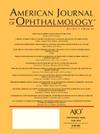Detection of Ocular Surface Squamous Neoplasia Using Artificial Intelligence With Anterior Segment Optical Coherence Tomography
IF 4.1
1区 医学
Q1 OPHTHALMOLOGY
引用次数: 0
Abstract
Purpose
To develop and validate a deep learning (DL) model to differentiate ocular surface squamous neoplasia (OSSN) from pterygium and pinguecula using high-resolution anterior segment optical coherence tomography (AS-OCT).
Design
Retrospective Diagnostic Accuracy Study.
Methods
Setting: Single-center.
Study Population: All eyes with a clinical or biopsy-proven diagnosis of OSSN, pterygium, or pinguecula that received AS-OCT imaging.
Procedures: Imaging data was extracted from Optovue AS-OCT (Fremont, CA) and patients’ clinical or biopsy-proven diagnoses were collected from electronic medical records. A DL classification model was developed using two methodologies: (1) a masked autoencoder was trained with unlabeled data from 105,859 AS-OCT images of 5746 eyes and (2) a Vision Transformer supervised model coupled to the autoencoder used labeled data for fine-tuning a binary classifier (OSSN vs non-OSSN lesions). A sample of 2022 AS-OCT images from 523 eyes (427 patients) were classified by expert graders into “OSSN or suspicious for OSSN” and “pterygium or pinguecula.” The algorithm's diagnostic performance was evaluated in a separate test sample using 566 scans (62 eyes, 48 patients) with biopsy-proven OSSN and compared with expert clinicians who were masked to the diagnosis. Analysis was conducted at the scan-level for both the DL model and expert clinicians, who were not provided with clinical images or supporting clinical data.
Main Outcome
Diagnostic performance of expert clinicians and the DL model in identifying OSSN on AS-OCT scans.
Results
The DL model had an accuracy of 90.3% (95% confidence intervals [CI]: 87.5%-92.6%), with sensitivity of 86.4% (95% CI: 81.4%-90.4%) and specificity of 93.2% (95% CI: 89.9%-95.7%) compared to the biopsy-proven diagnosis. Expert graders had a lower sensitivity 69.8% (95% CI: 63.6%-75.5%) and slightly higher specificity 98.5% (95% CI: 96.4%-99.5%) than the DL model. The area under the receiver operating characteristic curve for the DL model was 0.945 (95% CI: 0.918-0.972) and significantly greater than expert graders (area under the receiver operating characteristic curve = 0.688, P < .001).
Conclusions
A DL model applied to AS-OCT scans demonstrated high accuracy, sensitivity, and specificity in differentiating OSSN from pterygium and pinguecula. Interestingly, the model had comparable diagnostic performance to expert clinicians in this study and shows promise for enhancing clinical decision-making. Further research is warranted to explore the integration of this artificial intelligence-driven approach in routine screening and diagnostic protocols for OSSN.
利用人工智能与前段光学相干断层扫描检测眼表鳞状瘤变。
目的:利用高分辨率前段光学相干断层扫描(AS-OCT)建立并验证一种用于区分眼表鳞状瘤状病变(OSSN)与翼状胬肉和禽管状胬肉的深度学习(DL)模型。设计:回顾性诊断准确性研究方法:环境:单中心研究人群:所有接受AS-OCT成像的临床或活检证实诊断为osn、翼状胬肉或禽管病的眼睛。程序:从Optovue AS-OCT (Fremont, CA)提取成像数据,从电子病历中收集患者的临床或活检证实的诊断。使用两种方法开发了DL分类模型:(1)使用来自5,746只眼睛的105,859张AS-OCT图像的未标记数据训练掩膜自编码器;(2)与自编码器耦合的Vision Transformer监督模型使用标记数据对二元分类器(OSSN与非OSSN病变)进行微调。选取523只眼(427例)的2022张AS-OCT图像,由专家评分将其分为“OSSN或疑似OSSN”和“翼状胬肉或翼状胬肉”。该算法的诊断性能在一个单独的测试样本中进行评估,使用566次扫描(62只眼睛,48名患者)进行活检证实的OSSN,并与对诊断视而不见的专家临床医生进行比较。DL模型和专家临床医生在扫描水平上进行分析,没有向专家临床医生提供临床图像或数据。主要结果:专家临床医生和DL模型在AS-OCT扫描上识别OSSN的诊断性能。结果:与活检证实的诊断相比,DL模型的准确性为90.3% (95%CI: 87.5 ~ 92.6%),敏感性为86.4% (95%CI: 81.4 ~ 90.4%),特异性为93.2% (95%CI: 87.9 ~ 95.7%)。与DL模型相比,专家评分法的敏感性低69.8% (95% CI: 63.6-75.5%),特异性略高98.5% (95% CI: 96.4-99.5%)。DL模型的受者工作特征曲线下面积(AUC)为0.945 (95%CI: 0.918-0.972),显著高于专家评分者(AUC=0.688)。结论:DL模型应用于AS-OCT扫描对osn与翼状胬肉、鸭状胬肉的鉴别具有较高的准确性、敏感性和特异性。有趣的是,该模型在本研究中具有与专家临床医生相当的诊断性能,并显示出增强临床决策的希望。进一步的研究需要探索将这种人工智能驱动的方法整合到OSSN的常规筛查和诊断方案中。
本文章由计算机程序翻译,如有差异,请以英文原文为准。
求助全文
约1分钟内获得全文
求助全文
来源期刊
CiteScore
9.20
自引率
7.10%
发文量
406
审稿时长
36 days
期刊介绍:
The American Journal of Ophthalmology is a peer-reviewed, scientific publication that welcomes the submission of original, previously unpublished manuscripts directed to ophthalmologists and visual science specialists describing clinical investigations, clinical observations, and clinically relevant laboratory investigations. Published monthly since 1884, the full text of the American Journal of Ophthalmology and supplementary material are also presented online at www.AJO.com and on ScienceDirect.
The American Journal of Ophthalmology publishes Full-Length Articles, Perspectives, Editorials, Correspondences, Books Reports and Announcements. Brief Reports and Case Reports are no longer published. We recommend submitting Brief Reports and Case Reports to our companion publication, the American Journal of Ophthalmology Case Reports.
Manuscripts are accepted with the understanding that they have not been and will not be published elsewhere substantially in any format, and that there are no ethical problems with the content or data collection. Authors may be requested to produce the data upon which the manuscript is based and to answer expeditiously any questions about the manuscript or its authors.

 求助内容:
求助内容: 应助结果提醒方式:
应助结果提醒方式:


